When you think of North Wales, you likely imagine large spans of a barren landscape, tiny villages and lots of sheep, but that’s not all there is to it – far from it. Lurking upon rocky hilltops and nestled into mysterious valleys and mountainsides are an unbelievable array of Medieval castles, that offer so much rich history and an insight into an expansive past.
Plan a road trip to North Wales and get up close to real history by uncovering some of North Wales’s most beautiful castles; this list will present some of the most unmissable castles, as well as practical information, such as location, and opening times.

The 18 Best Castles in Northern Wales
1. Powis Castle and Garden
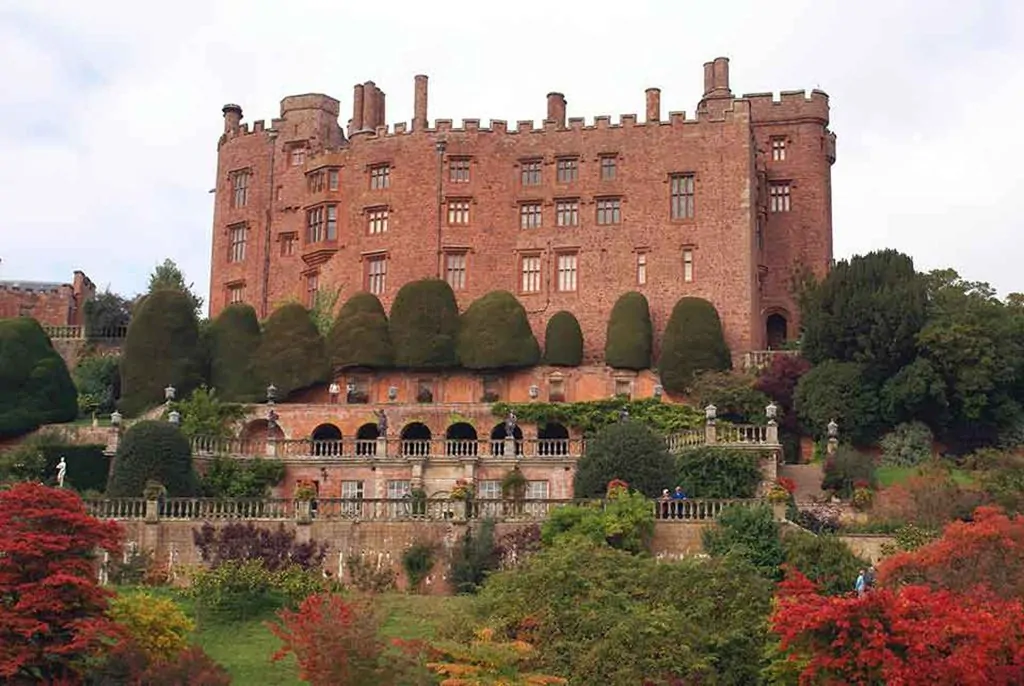
This grand Medieval fortress built near Welshpool is one of Wale’s finest examples of early modern architecture and sophistication; the Castle was built by a Welsh prince in the 13th century and continued to flourish throughout the centuries, particularly in the 17th century, where it was renovated into the contemporary Renaissance style.
Today, the Castle hosts an incredible collection of artworks and historical artefacts, such as the Twelve Caesars, which are 17th-century Italian busts, as well as a Bellotto masterpiece.
Where: Powis, Wales
When: 13th century
Open for visit: Yes. Check here for more information.
2. Chirk Castle
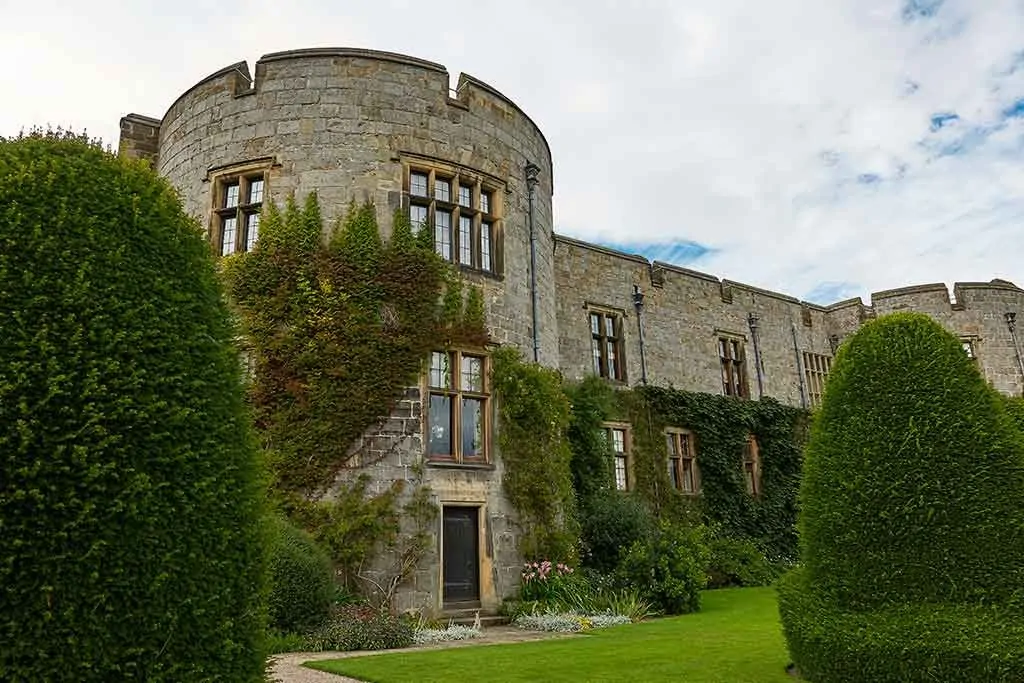
Built in the year 1295 by Roger Mortimer de Chirk, Chirk Castle guards the entrance to the Ceiriog Valley and has functioned as a prime military location throughout the centuries.
In 1595, the fortress was turned into the family home of the prominent Myddelton family, where every room was furnished head to toe with lavish and luxurious decorations and artefacts, many of which are still available to view even today.
Many visitors enjoy a stroll around the castle grounds, before uncovering the many secrets and stories that it has to offer inside.
Where: Wrexham, Wales
When: 1295
Open for visit: Yes, check here for more information.
3. Castell Dinas Bran
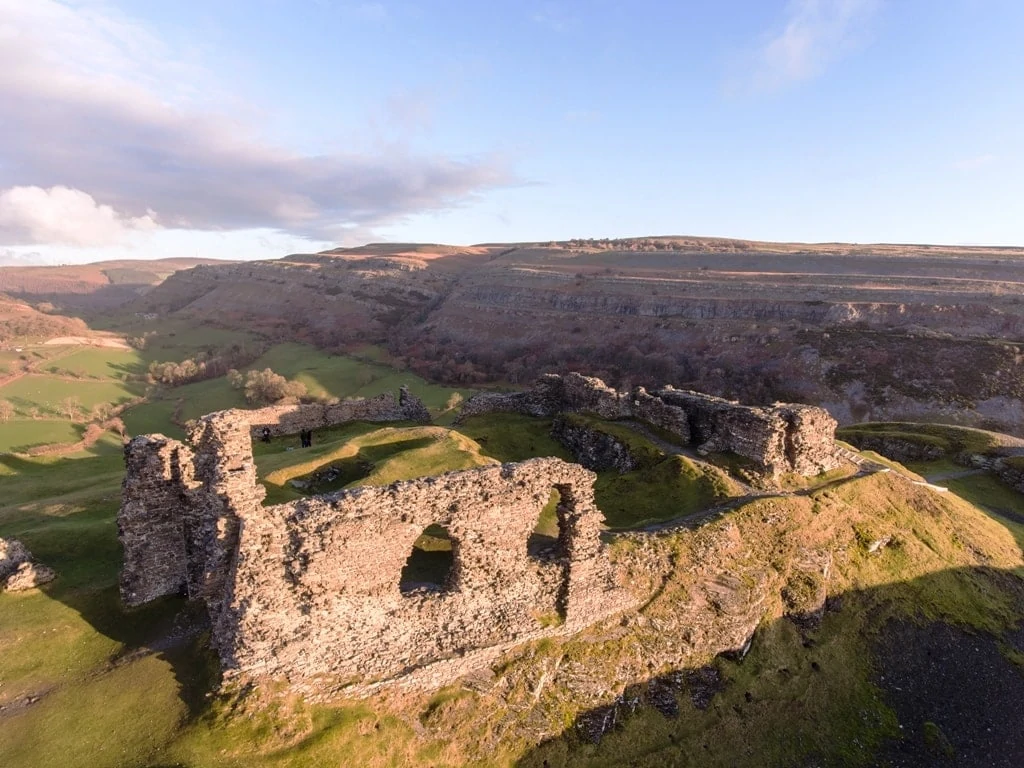
This wonderful Medieval castle, which dominates a hilltop above the town of Llangollen, was most likely built in the 1260s by Gruffydd Maelor II, who was a prince of Powys Fadog.
Interestingly, the castle was built on top of the ruins of an Iron Age hillfort, which was built in approximately 600BC; Castell Dinas Bran, therefore, has a vast, and extensive history, making it a site of rich cultural importance.
There are also many myths and legends associated with this ancient site, which makes it a fascinating place for so many reasons.
Where: Llangollen, North Wales
When: 1260s
Open for visit: Yes.
4. Holt Castle
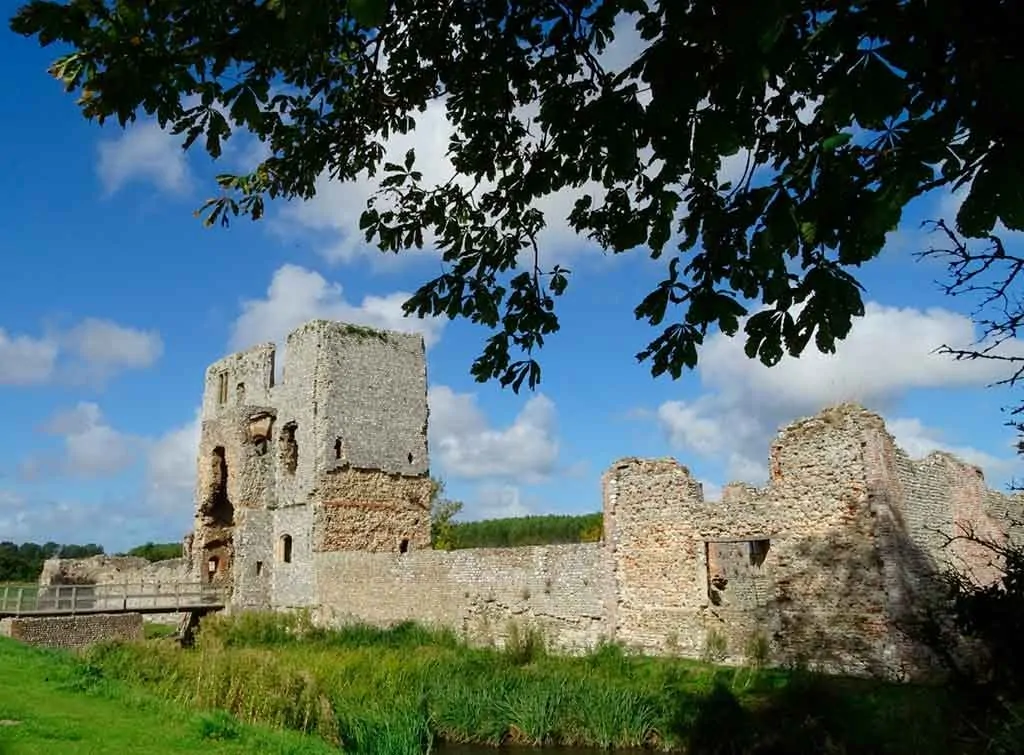
Despite there only being a small part left of Holt Castle, it originally began life as a flourishing Medieval Castle; construction began in the 13th century during the era of the Welsh Wars.
Between the years 1675 and 168, a huge part of the castle was removed by Sir Thomas Grosvenor, who was the third Baronet of Eaton; after this, Holt Castle remained as just a tower and a rectangular building.
Today, visitors are still charmed by the castle’s history and enjoy capturing a glimpse of the small amount that still remains.
Where: Holt, North Wales
When: 13th century
Open for visit: Yes.
You might be also interested in:
5. Caergwrle Castle
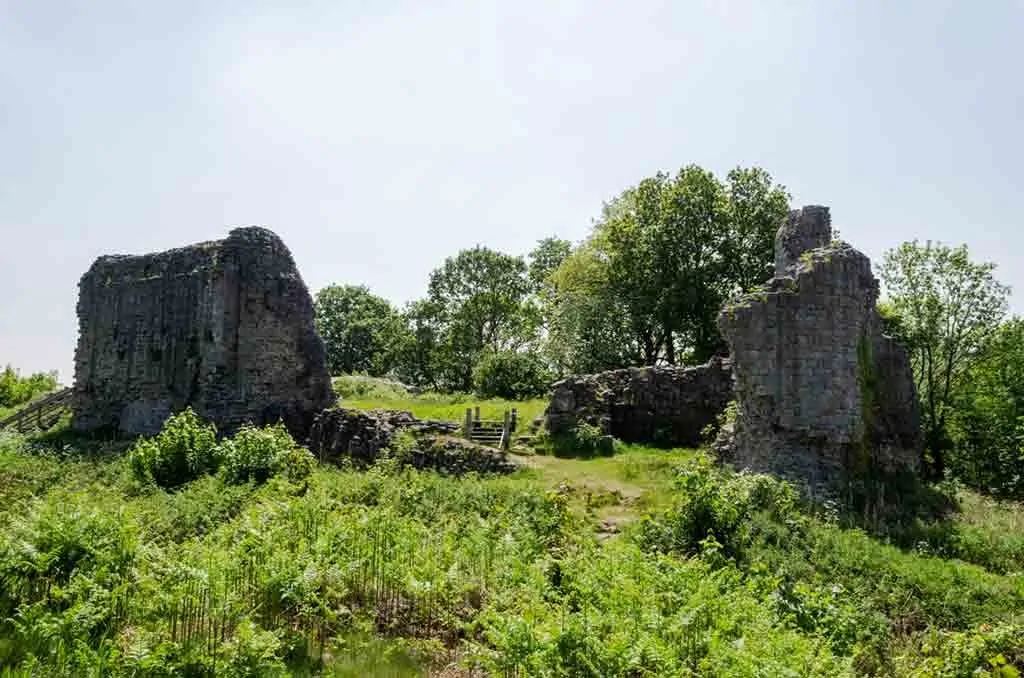
Though what remains of Caergwrle Castle is mere ruins, it is one of the most stunning in the whole of North Wales. It is often known as Queen’s Hope in scholarly texts and is located in the town of Caergwrle in Flintshire. This is the perfect place to spend a leisurely afternoon wandering around historic remnants and admiring the beautiful Welsh scenery that envelops the castle.
Where: Caergwrle, North Wales
When: 13th century
Open for visit: It is just ruins, so is free to explore.
6. Ewole Castle
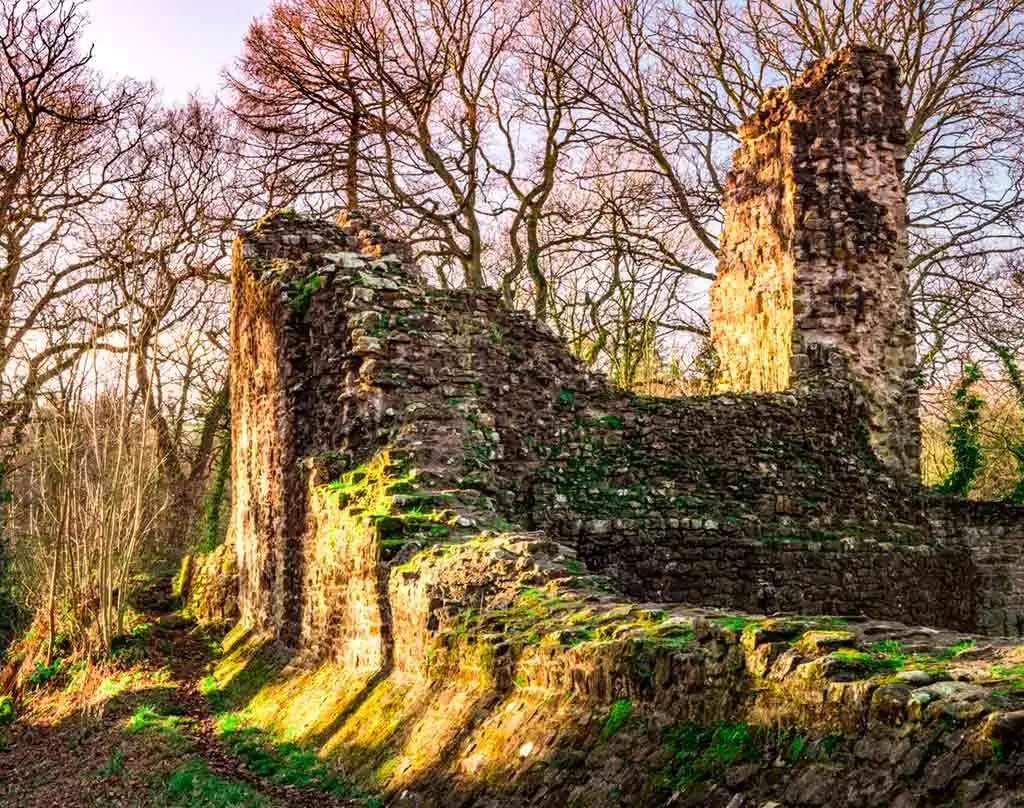
This Grade I listed building is fundamental to the heritage of the North of Wales; it was originally constructed between the 12th and 13th centuries and is a relic of a short triumph that the prince Llywelyn ap Gruffudd held over the English Crown and the Anglo-Norman Marcher Lords during the middle of the 13th century.
By the late Medieval period, the site lay merely in ruins; today, however, the remains capture a true sense of the past, that many visitors and locals alike are captivated by.
Where: Ewole, North Wales
When: 1297
Open for visit: It is just ruins, so free to explore whenever.
7. Prestatyn Castle
This Motte and Bailey castle was built in the year 1157 and was built on land that was granted to the Norman Lord Robert Banastre by King Henry II of England. The Castle occupies a low-lying position and is very well built and preserved, considering its age.
Little of the early Medieval castle still remains, but there are still many remnants of the past, which make for the perfect place to visit if you are interested in the local history of North Wales.
Where: Prestatyn, North Wales
When: 1157
Open for visit: Yes.
8. Rhuddlan Castle
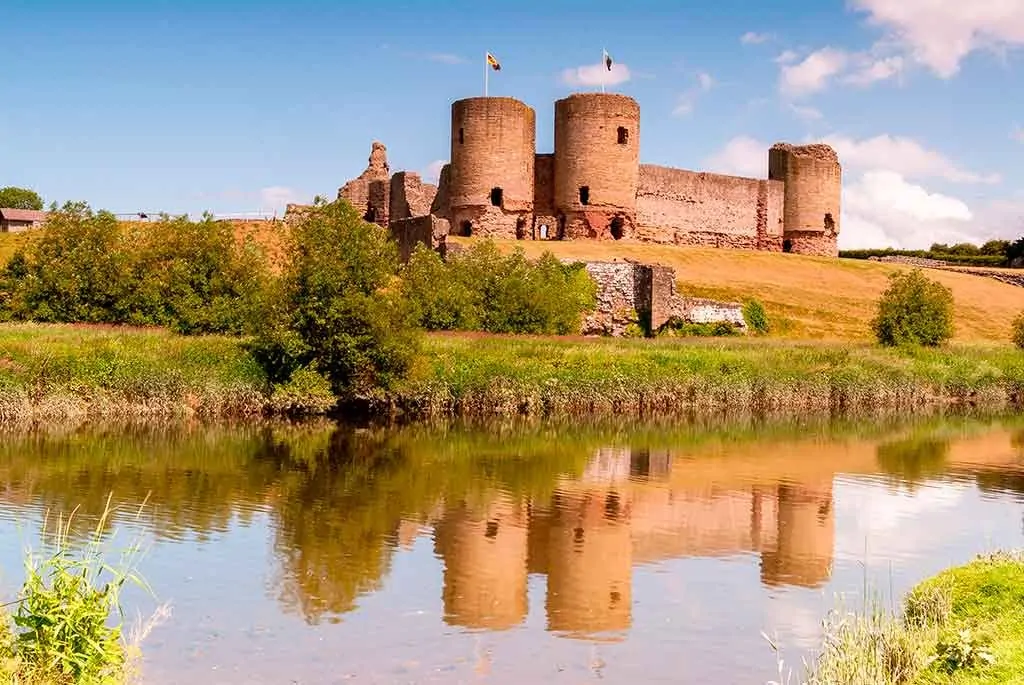
The layout of Rhuddlan Castle is often known as a diamond, as the gatehouses are positioned at the corners of the square baileys instead of along the sides.
Construction was largely completed in the late 1270s by the English, and the castle serves as a prime military base for a long period of time. Today, this magnificent castle is managed by a Welsh Government body who seek to preserve and promote the heritage of the castle.
Where: Rhuddlan, North Wales
When: 1270s
Open for visit: Yes. Check here for more information.
9. Gwrych Castle and Gardens
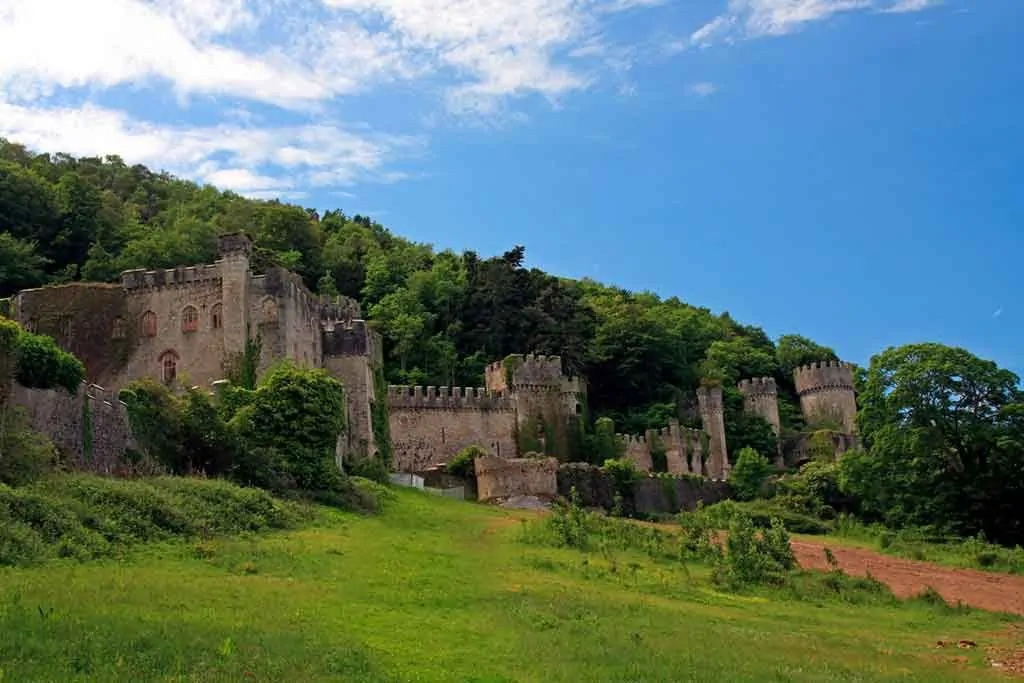
Situated in the gorgeous North Welsh town of Abergele, Gwrych Castle and its surrounding gardens, are Grade I listed, and are quintessential to Welsh heritage.
The history of the castle dates back to the 12th century, but the castle ruins that are visible today were constructed in 1812, by the industrialist Lloyd Hesketh Bamford-Hesketh, and it captures the nineteenth-century infatuation with a romanticised, Gothic, Medieval past.
Where: Abergele, North Wales
When: Origins in the 12th century
Open for visit: Yes, check here for more information.
10. Conwy Castle
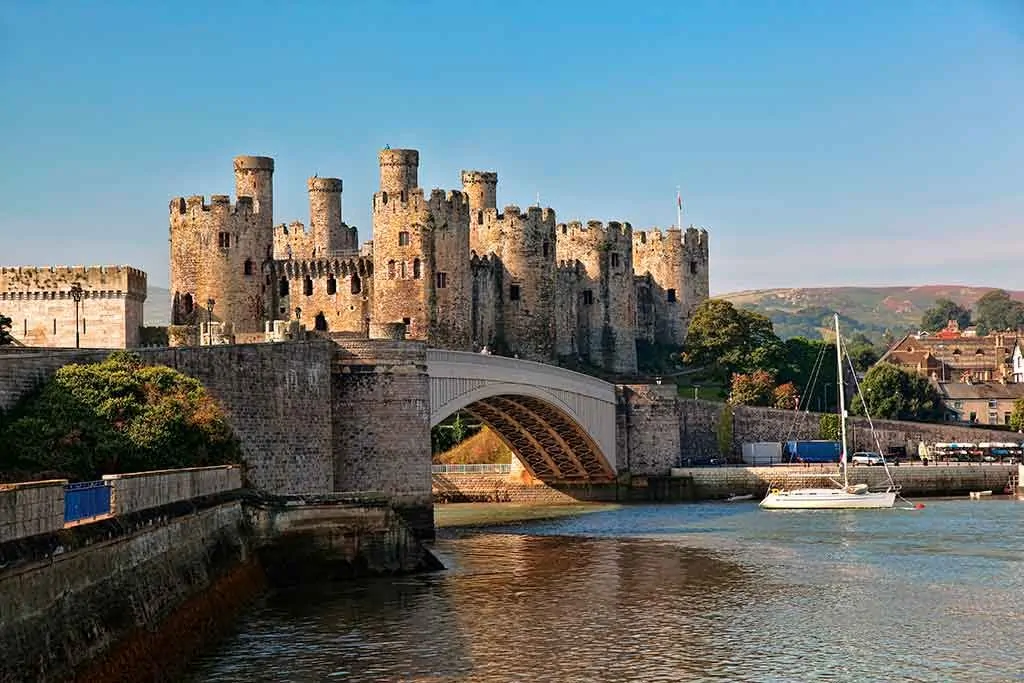
This incredibly sophisticated fortification was built by King Edward I during his conquest of Wales, between the years 1283 and 1289.
For centuries, the castle served a primarily military function, and today, it is listed as a UNESCO World Heritage Site and is famed as one of the finest examples of Medieval military architecture in Europe.
Today, the castle attracts a huge number of tourists annually; visitors are enticed by the castle’s rich history, and the way it has impressively remained standing for centuries.
Where: Conwy, North Wales
When: 13th century
Open for visit: Yes, check here for more information.
11. Dolwyddelan Castle

This gorgeous and quintessentially Northern Welsh Castle is nestled in the foreground of the dramatic and impressive mountain scenescape of Snowdonia and has a rich and extensive history.
Though the castle was built in the early thirteenth century, it came into its prime in the early nineteenth century, whereby it became a popular location with landscape artists, due to its romantic and idyllic exterior; sometime after, the castle was restored by Lord Willoughby de Eresby in line with Medieval-esque ideals.
Where: Snowdonia, North Wales
When: Early 13th century
Open for visit: Yes, check here for more information.
12. Castel Aberlleiniog
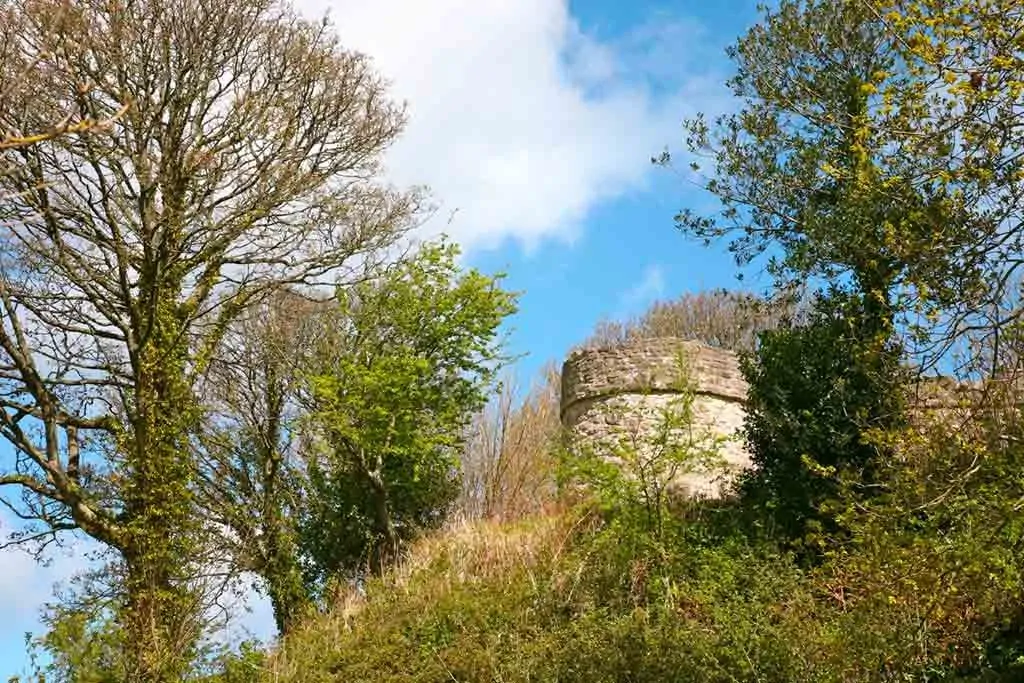
This beautiful motte and bailey fortress is located near the Welsh village of Llangoed on the Isle of Anglesey; it was built between the years 1080 and 1099 by Hugh d’Avranches, 1st Earl of Chester, which makes it one of the oldest Medieval castles in the North of Wales.
The original Norman timber structure has not been in existence for centuries, and the castle that we can see today was constructed prior to the mid-17th Century; it was restored in 2008 to make it open to the public.
Where: Llangoed, North Wales
When: 11th century
Open for visit: Yes, check here for more information.
13. Beaumaris Castle
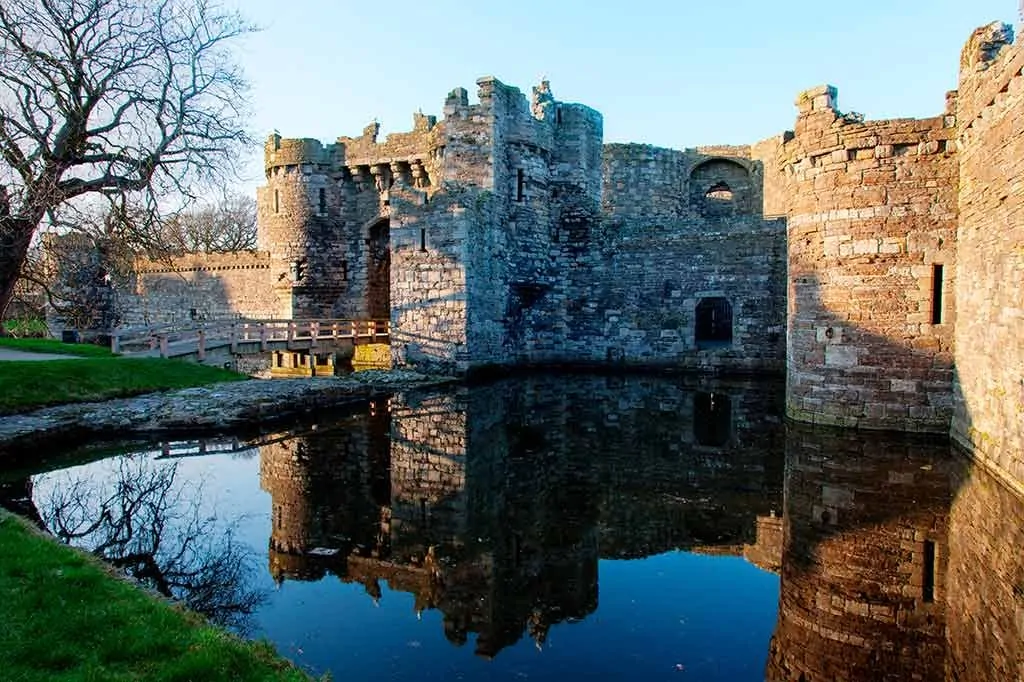
Constructed as part of King Edward I’s determination to conquer North Wales after the year 1282, Beaumaris Castle has had a strong military role for centuries. Interestingly, the Castle was never fully built, but if it had been, it would have been very architecturally similar to Harlech Castles, with its concentric nature and rectangular shape.
Today, Beaumaris Castle is recognised as a UNESCO World Heritage Site and attracts visitors from all over, who wish to uncover its centuries worth of history.
Where: Beaumaris, North Wales
When: 1295
Open for visit: Yes, check here for more information.
14. Caernarfon Castle
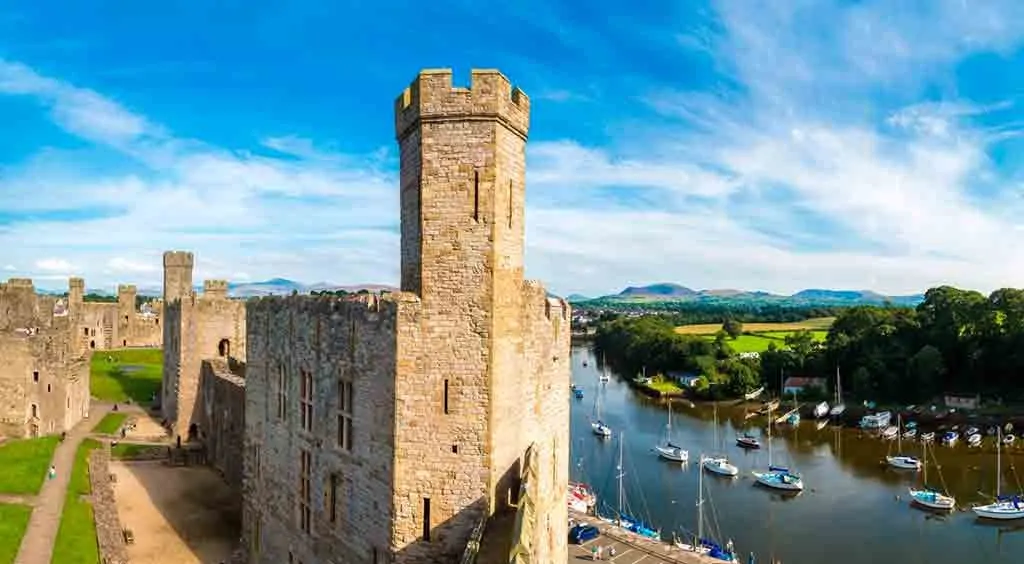
This motte and bailey castle in the town of Caernarfon was built in the 11th century and remained in this style until the year 1283 when King Edward I of England began replacing it with a stone instead.
This site has a rich and extensive history, whereby the first fortifications at Caernarfon were built by the Romans; little is known about their fort and the civilian settlement that came with it, but it proves the fact that the castle’s heritage is vast.
Today, visitors are captivated by the castle’s beautiful façade and the surrounding scenery.
Where: Caernarfon, North Wales
When: 11th century
Open for visit: Yes, check here for more information.
15. Dolbadarn Castle
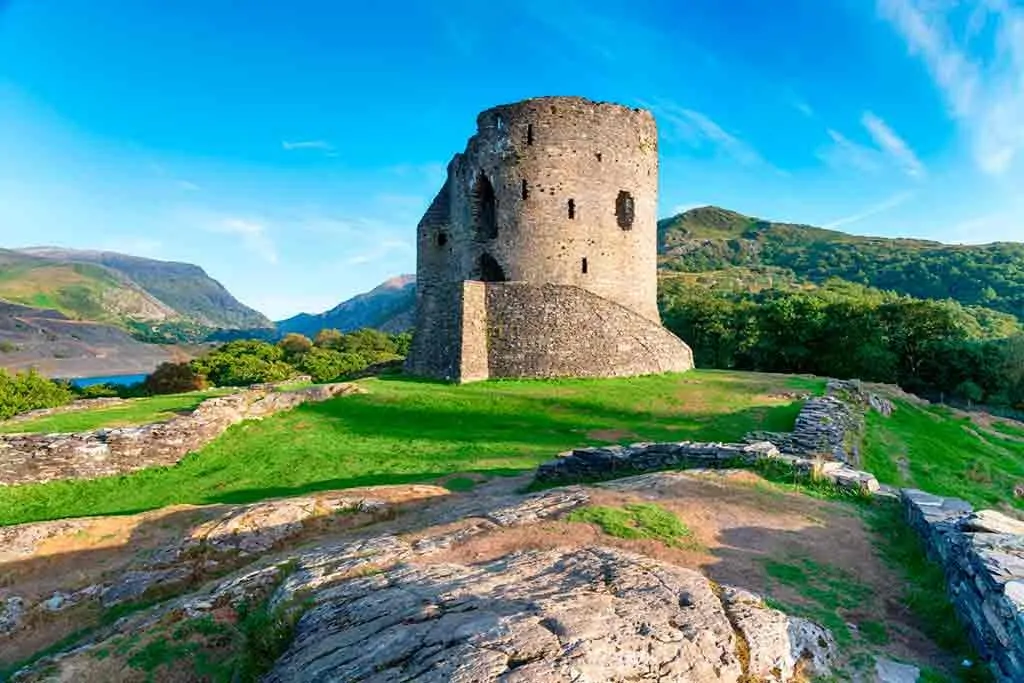
This unusual looking castle was built by the Welsh prince, Llywelyn the Great during the early 13th century, and has remained a symbol of military importance and authority since then.
From the 1760s onward, the castle became a popular subject matter for painters who wished to capture ideas such as the sublime and the picturesque, often painting the castle in a moody and mysterious fashion.
The castle is one of the most gorgeous in the entirety of North Wales, largely due to its quirky and unusual exterior, as well as its magnificent surroundings.
Where: Gwynedd, North Wales
When: 13th century
Open for visit: Yes, check here for more information.
16. Criccieth Castle
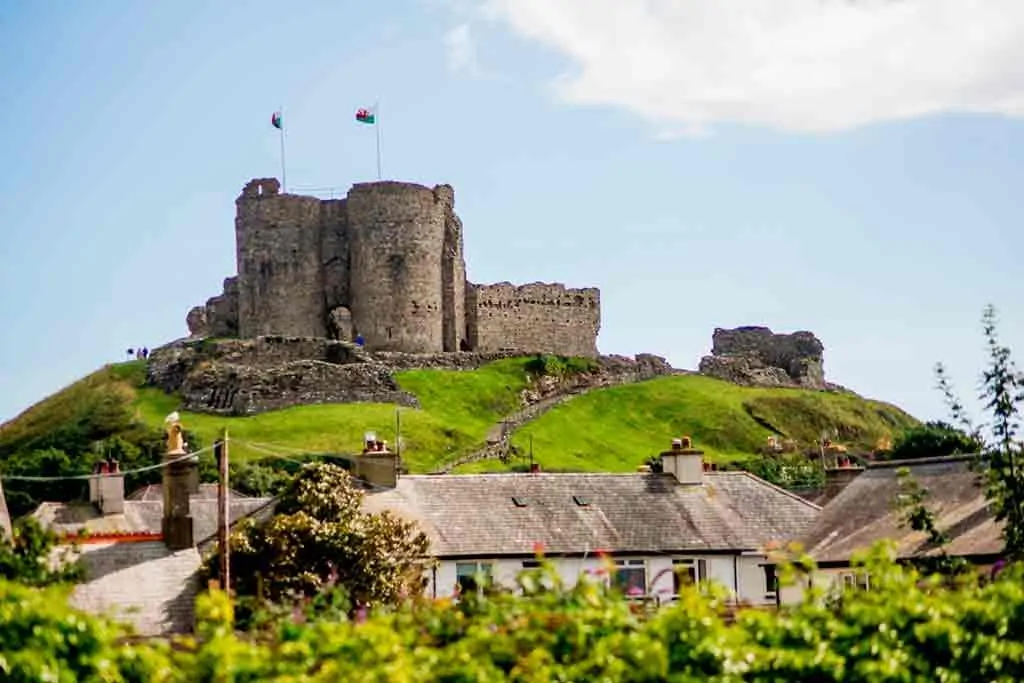
Built by Llewelyn the Great of the Kingdom of Gwynedd in the late 13th century, Criccieth Castle has been used for a variety of reasons over the centuries.
For example, it originally started life as a Motte and Bailey castle before the masonry castle was built; it was later used as a prison until 1404, before later severing as a location for romantic painters and writers to use as inspiration, such as the famous artist, Joseph Mallord William Turner.
Today, visitors can roam the castle remains, and learn about its history through exhibits and informative stands.
Where: Criccieth, North Wales
When: 13th century
Open for visit: Yes, check here for more information.
17. Harlech Castle
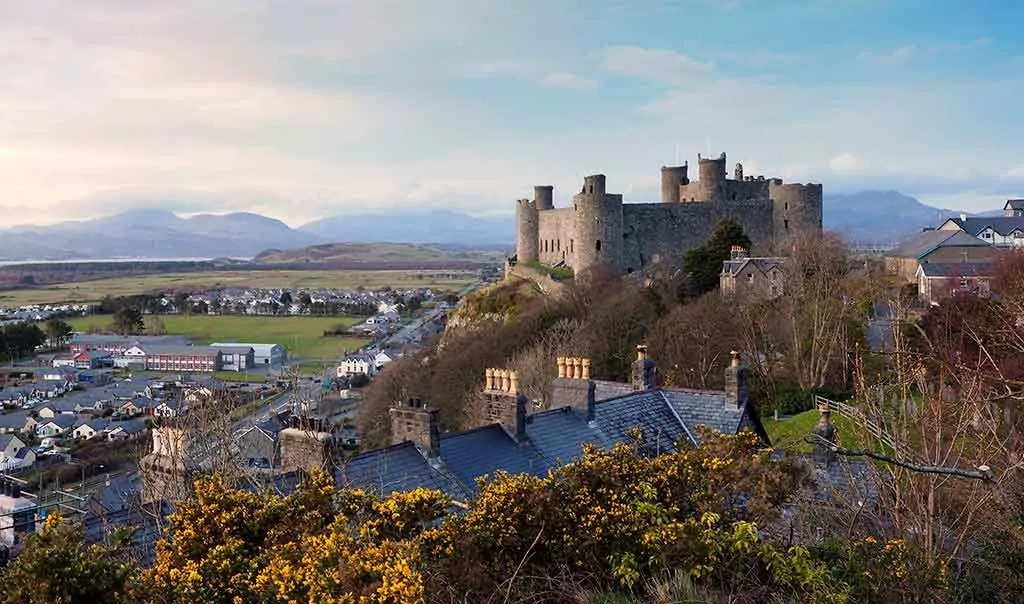
Situated proudly on top of a rocky hill, that looks down upon the town of Harlech below, lies Harlech Castle, which is a Grade I listed Medieval fortification.
It was originally built by Edward I during his invasion of Wales, between the years 1282 and 1289, and continued to maintain a military role throughout the centuries.
It now remains in ruins, but is nonetheless a UNESCO World Heritage Site, and is famed for its sophisticated early modern architecture. One of its most incredible qualities is the breath-taking views that are offered from the top.
Where: Harlech, North Wales
When: 13th century
Open for visit: Yes, check here for more information.
18. Castell y Bere
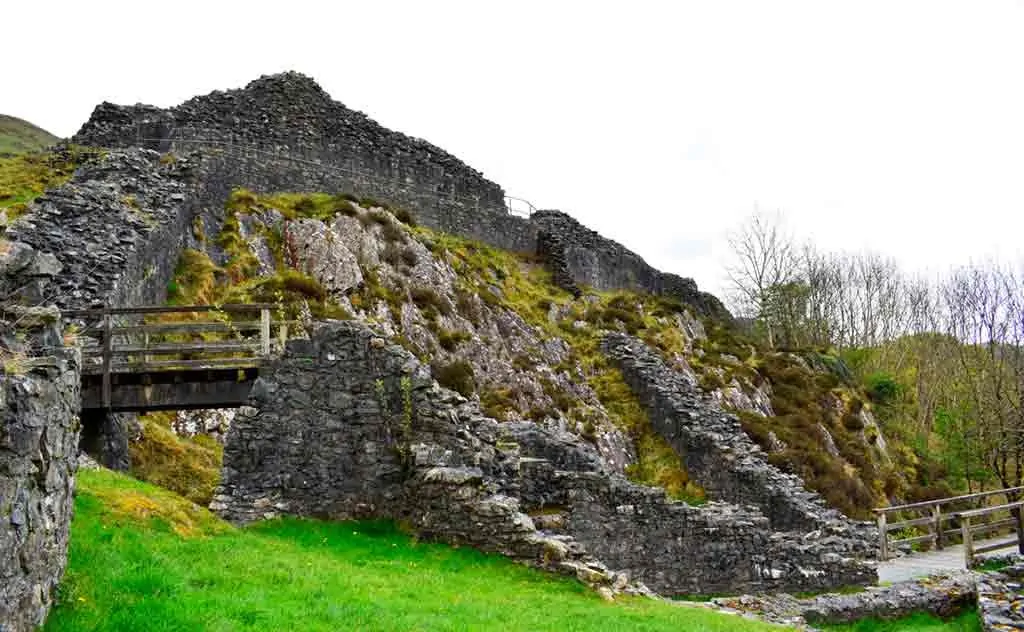
This ruinous castle is situated near Llanfihangel-y-pennant in Gwynedd in North Wales and was constructed by Llywelyn the Great in the 1220s. Its original purpose was to assert his dominance and authority over the local people, as well as defending the south-west part of the princedom.
However, the castle was taken by the English in 1282, during the war with Edward I of England. Interestingly, there are a series of decorative sculptures, including statues of soldiers, that have been built into the castle, which is one of the only castles in North Wales that have such details.
Where: Llanfihangel-y-pennant, North Wales
When: 13th century
Open for visit: Yes, check here for more information.
This list has summarised some of the most beautiful and fascinating castles in the gorgeous region of North Wales; there is so much to uncover, with the added benefit of fewer tourists, and therefore, a greater sense of quiet and true discovery. If this list hasn’t made you start itching for a trip to Wales, we don’t know what will!
PIN IT!
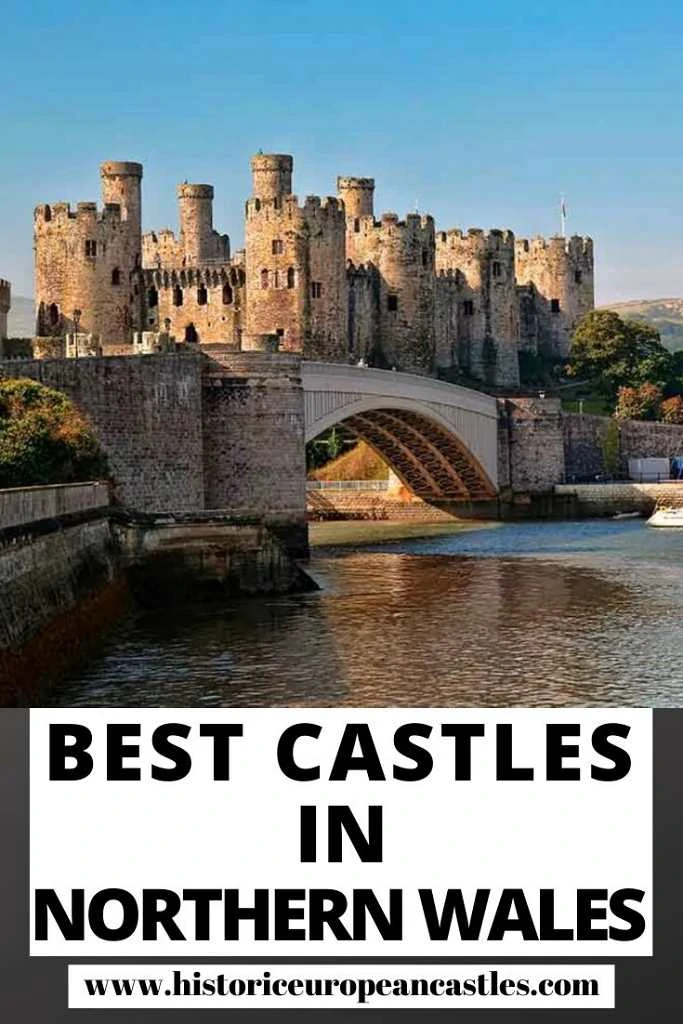

Beautiful pics! We are going this summer and plan to visit a few of these. 🙂 (You spelled “Caernarfon” as “Caernarforn” three out of four times.)
Thanks, I just checked the spelling!